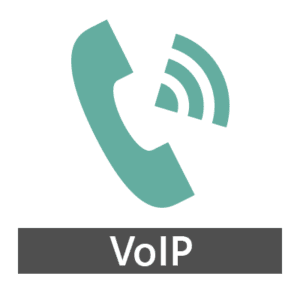Top 7 reasons to consider a fibre optic leased line internet for your business
For commercial users unwilling to share their internet connection with a host of other subscribers, a fibre optic leased line internet provides a sensible and economical business communications solution.
In this article, we’ll be looking at some of the underlying principles of fibre optic technology and examining the principal reasons why a leased line is an option very much worth considering, for your business communications.
What is a Leased Line?
You will be familiar with standard public internet or consumer broadband connections such as ADSL and FTTC (‘fibre to the cabinet’ services such as Infinity, which uses copper wire into the premises). These are the type of deals where you buy a subscription from an ISP (Internet Service Provider), are given a maximum data allowance for a certain period (month, year, etc.) and allotted a maximum data connection speed.
The problem with these packages is that the “pipeline” you’re using to access the internet is one that has to be shared with numerous other subscribers on the same network, and that the maximum connection speed you’re quoted typically applies only to downloads – and isn’t necessarily the connection speed that you’ll actually experience, from session to session.
A leased line is an internet connection which you rent (lease) on the condition that it’s reserved exclusively for you. It’s therefore described as being your “dedicated” line. And with your exclusive rights to it, you also get the assurance of a fixed bandwidth and a symmetrical data connection which uses the same transfer speed while uploading or downloading data and files.
On the technical side, a leased line connection consists of a private circuit between your business premises and the network provider’s nearest point-of-presence or PoP.
What’s Fibre Optic?
Rather than sending electricity down copper wires, a fibre optic cable sends coded information via a beam of light which is projected through a glass tube or pipe. The cable consists of very thin strands of glass or plastic (optical fibre), each of which can transmit somewhere in the region of 25,000 phone calls.
Data transmission over fibre optic happens at the speed of light, and a complete fibre optic cable may be made up of anywhere from two to several hundred strands. Though some slowing down may occur where the data stream branches off from a network provider’s point-of-presence to your office connection (especially if copper wiring is involved), connection speeds remain very much higher than what you’ll get from even the quickest consumer broadband services.
When used in providing a leased line, fibre optic technology offers several advantages for business communications.
1. Faster Connection Speeds
A leased line may operate at speeds of 10Mbps, 100Mbps, 1000Mbps, or even 10,000Mbps. You can compare this with consumer-grade ADSL services, some of which advertise speeds of “Up to 8Mbps”, or the more advanced ADSL2+ which boasts connection speeds of “Up to 20” or “Up to 24Mbps.”
2. A dedicated service
The problem with consumer internet services is that they’re shared among their various users, or “contended“. So at peak times (and even over a fibre optic distribution network), the provider’s finite amount of bandwidth will be fought over by multiple subscribers, and network performance will suffer for everyone, in terms of its speed and smoothness.
By contrast, a leased line is “uncontended” and reserved exclusively for the business that’s renting it. The advertised network speed remains available to them at all times, and in all directions (upload and download). This is a real plus for users who require high-speed connections for file sharing, graphics, video conferencing, VoIP (Voice over Internet Protocol) telephony, and other aspects of business communications.
LG Networks has a long history of providing leased line technology for business communications, built on a foundation of fibre optic and structured cabling systems.
3. Greater Reliability and Network Uptime
Fibre optic cables don’t suffer from the electrical interference problems that plague copper wiring, and their physical construction makes them more resistant to damage and the elements. The hardware and infrastructure backing up a fibre optic network also tends to be much more robust than consumer-grade broadband.
As a result, a leased line connection based on fibre optic technology is much less likely to fail or disappoint the user. This translates into higher network uptime, and increased availability for business communications networks – critical requirements in our demanding digital economy.
The standard service level resolution time for ADSL is forty working hours – a leased line has either a 5 or 6 hour resolution, 24x7x365.
Expert providers like LG Networks will also have reliable backup and Disaster Recovery (DR) measures in place, to ensure that you and your customers will have access to your business communications system, at all times.
4. Same upload and download speed (synchronicity)
The contended ADSL and even FTTC services have a much higher download speed than upload. Typically an ADSL2+ service may have a 10Mbps download speed but only 0.5Mbps upload. This spells disaster for organisations needing to send large files, or are planning to move to a cloud server. Poor upload speed is also a major contributor to poor VoIP quality. A leased line provides a synchronous service – i.e. the same upload and download speed.
5. Greater Usage or Many Users
For business organisations having 20 users or more, a fibre optic leased line is a great solution for optimising business communications and the overall user experience.
But even if you have fewer than 20 people in your establishment, a leased line may be preferable – especially if your internet usage is high. This might be the case if your company does a lot of video conferencing, or if you have mobile workers and staff in remote areas.
6. Greater Flexibility and Reach
A leased line may be used to extend the range of your business communications network, allowing workers at home, in remote locations, or on the road to easily connect to their office systems.
This enhanced reach can be used to support flexible working practices and for example, to reduce the load on your in-house IT division by moving applications and data off site and into the cloud.
7. Better Cost Management
Getting a leased line for your business communications does require some investment, especially if you’re also installing or upgrading a structured cabling system for your fibre optic data network. But a fibre optic leased line can save you money in a number of areas.
For example, using VoIP telephony for your business communications often attracts huge savings over other systems. And moving files or business applications to the cloud allows for wider and easier access, while reducing the need for on-site file servers and related hardware.
If you’d like to know more about data networks, structured cabling, or how a fibre optic leased line could benefit your business communications, contact the specialists at LG Networks.





